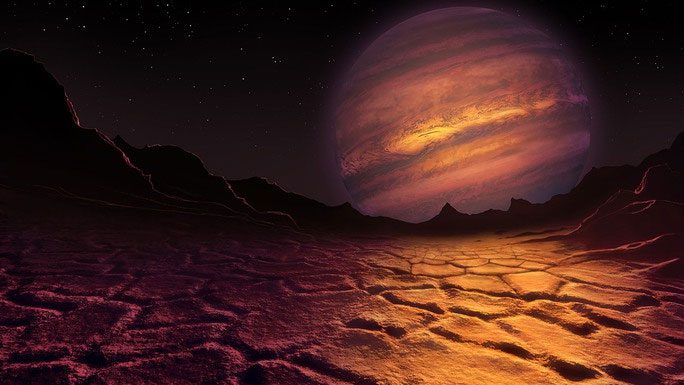Astronomers have recently discovered two extremely rare worlds: a pair of ultra-cold dwarf stars, invisible to the naked eye, locked in a tight embrace in an eternal dance.
According to Science Alert, these two ultra-cold dwarf stars form a binary star system, orbiting each other at an incredibly close distance, making a year there even shorter than a day on Earth: just 20.5 hours.
This elusive type of object cannot be seen with the naked eye, despite the vast number of them existing in the Milky Way galaxy, which contains Earth. They have such low mass that they only emit infrared light, making them detectable only by powerful infrared telescopes.

Graphic depiction of a dwarf star from the perspective of its companion world – (Image: SCIENCE)
The extreme duo was discovered by a team of scientists led by astrophysicist Chih-Chun “Dino” Hsu from Northwestern University (USA). They named the system LP 413-53AB.
This type of object has long been theorized to exist, but none have been confirmed until now. However, thanks to archival data from several infrared astronomical observation projects, the research team noticed something unusual while observing “a star” that is billions of years old.
Upon further examination using the Keck Observatory (located in Hawaii), they confirmed that it must be two worlds rather than one, even though they appeared as one due to their proximity.
Professor Adam Burgasser from the University of California, San Diego (UC San Diego), a member of the research team, stated that they noticed differences within just a few minutes of observation. Previous similar pairs had orbital periods ranging from a few months to several years, but this pair exhibited rapid changes in their spectral lines right before their eyes.
The distance between these two stars is even closer than the distance from Jupiter to one of its four largest moons, Callisto.
With an age of several billion years, scientists speculate that the two stars did not start their lives so close together but gradually drifted into each other’s gravitational pull in a peculiar dance. It is estimated that in about 1 million years, they may actually merge into one, though the outcome of this collision remains unknown.


















































